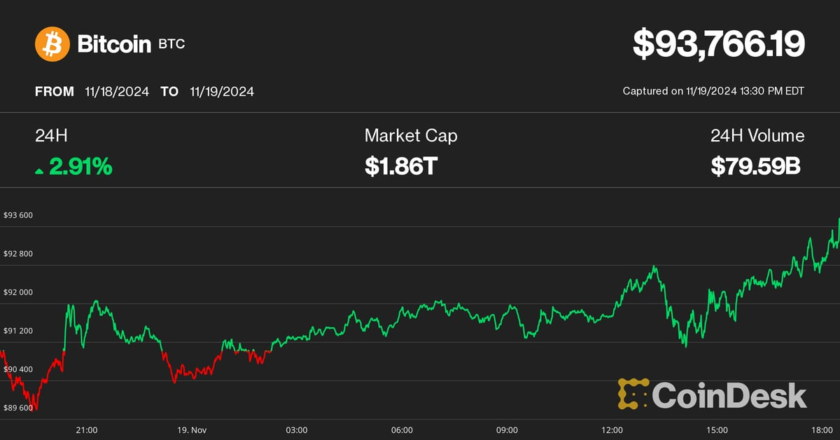By CCN: Fidelity Digital Assets, a subsidiary of the world’s fourth-largest asset manager with $2.46 trillion in assets under management, said in a research paper that institutional investments in bitcoin and other crypto assets are likely to increase over the next five years.
The research read:
“Nearly half of respondents (47%) appreciate that digital assets are an innovative technology play. 46% find digital assets’ low correlation to other assets among the most appealing characteristic. Financial advisors (74%) and family offices (80%) view the characteristics of digital assets most favorably.”
We asked: what do institutions really think about #digitalassets? https://t.co/3Lq5h5ITbT
— Fidelity Digital Assets (@DigitalAssets) May 2, 2019
The research of Fidelity Digital Assets comes after Tom Jessop, the head of the firm, said in an interview with TheBlock that out of 450 institutions it surveyed, 20 percent or 90 institutions were already invested in the crypto market.
“We just completed a survey of about 450 institutions, so everything from family offices to registered investment advisors to hedge funds. It’s interesting, I think about 20% indicated that they currently allocate to digital assets with an intention to grow that,” he said.
Why Is Institutional Interest in Crypto Increasing?
In recent months, especially in the first quarter of 2019, the institutional sector of crypto has seen significant progress in strengthening custodial services and infrastructure.
Bakkt, a subsidiary of ICE, the parent company of the New York Stock Exchange (NYSE), recently announced its acquisition of Digital Asset Custody Company (DACC), taking its first step towards facilitating the potential inflow of capital from institutions.
Read about @Bakkt‘s custody solution and why we’ve filed to become a NY trust, plus our acquisition of DACC and how we’re working closely with @BNYMellon https://t.co/ecqMXWCoXe
— Adam White (@WhiteAdamL) April 29, 2019
Existing companies within the crypto sector in the likes of BitGo have received regulatory approval to operate as trusted custodial service providers, offering institutions a wide range of services to rely on to commit to the market.
For institutions, whether the bitcoin price is at a yearly high or at a yearly low is of less importance. Rather, the quality of custodial services and whether the infrastructure that supports the crypto market can handle large institutional demand is key.
The research of Fidelity Digital Assets has discovered that 22 percent of institutional investors have invested in crypto assets as of May and that over the next five years, 40 percent of respondents said they plan to invest more in the sector.
“According to the survey, about 22% of institutional investors already have some exposure to digital assets, with most investments having been made within the past three years. Four in ten respondents say they are open to future investments in digital assets over the next five years,” the research paper read.
Confidence in the Bitcoin Industry is Rising
Price-wise, the confidence of retail investors has likely declined quite significantly in the past 17 months considering that the bitcoin price remains down by around 72 percent from its all-time high at $20,000.
The valuation of the crypto market has also declined by more than 75 percent since January 2018.
The valuation of the crypto market has dropped from around $830 billion to $177 billion since January 2018 (source: coinmarketcap.com)
The noticeable drop in the valuation of crypto assets and companies inevitably caused most of the capital and resources in the space to dry up, which led quality projects to stand out and secure opportunities to sustain their operations throughout the bear market.
Fidelity Digital Assets emphasized that improving institutional sentiment around the crypto sector reflects the positive developments in the industry pushed by venture capital investment and innovative development.
“This institutional sentiment mirrors many of the positive developments we’ve observed. Venture investment continues, alongside good development work, and increasing regulatory conversations. Institutions are more aware of these developments now than they were six or twelve months ago,” the firm said.




